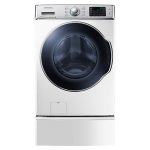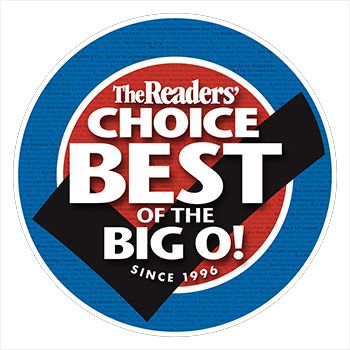Top load or front load washer: How do they stack up?
 When it’s time to buy a new washing machine, one of your most important decisions will be between a front-loading or top-loading machine. Each type has its pros and cons, and in this article we’ll point out a few considerations to factor into your selection.
When it’s time to buy a new washing machine, one of your most important decisions will be between a front-loading or top-loading machine. Each type has its pros and cons, and in this article we’ll point out a few considerations to factor into your selection.
Accessibility and space
Your laundry room’s size and layout will affect the type of machine you buy. If you live in an older house, your plumbing and floor plan may already be configured for a washer, either top- or front-loading, side by side with a dryer. If you live in a small condo or townhouse, your space may only accommodate a stacked front-loading washer atop a dryer (or an efficiency-style combo unit). Likewise, in many older houses the only space available for laundry equipment is in the basement, where low ceiling heights may preclude stacking a washer and dryer.
But let’s say you have ample space and plumbing hookups for any type of washing configuration you want. In that case, the choice between top- and front-loading becomes a matter of personal preference.
Top loading washing machines
Familiarity breeds contentment in the case of top-loaders. Their controls, even electronic control panels, are typically straightforward and simple to operate. Top-loader lids can be opened after the cycle starts on select traditional models, so it’s easy to toss in a forgotten item without having to wait for the next load.
On traditional top loading washers an agitator takes up a great deal of space that could otherwise be occupied by clothing items. Furthermore, the cleaning ability of a traditional top-loader pales in comparison to a front loading washer. (Of course, any machine that’s overfilled won’t clean as well without ample room for the contents to move freely through the water and detergent.)
Although manufacturers have made great strides in producing “greener” top-loading machines, top-loaders still use more water than front-loaders, which is a consideration for both conserving resources and saving on water and energy costs over the life of the machine.
For homeowners with mobility issues, top-loaders may be more comfortable and convenient. Many people consider it easier to reach down into a top-loader to unload heavy, wet wash than to bend down and lean forward into a front opening. Conversely, homeowners who are wheelchair-bound may find the greatest accessibility from a pair of front loading washers and dryers, stacked upon pedestals.
Because they are oriented differently than front loaders, top loading washing machines are easier to keep clean and are less susceptible to mold and odors.
Top-loading machines typically cost less than front-loaders, and the difference in price can be significant, depending on the bells and whistles each manufacturer offers.
Front loading washing machines
Despite their generally higher cost, front-loading machines usually have a greater tub capacity, and the absence of an agitator means cords or socks won’t wrap themselves around the mechanism.
Front-loaders require less water than top-loading machines, and their higher-velocity spin cycle extracts more water from the load, reducing drying time. As a result, the higher initial cost of a front-loading washer may easily pay for itself in energy and water savings over just a few years.
Modern, high-efficiency front load washers are generally more reliable than top load washers. Front loaders are generally designed with a coin catcher to handle debris, and the designs have been around longer, allowing manufacturers to correct design deficiencies.
On the downside, front-loading machines are prone to vibration, and once the cycle starts, the unit can’t be opened to add more pieces. Pulling wet laundry through the front-facing door may allow large and bulky items like sheets and towels to contact the laundry room floor.
The main drawback of a front-loading washer is maintaining and cleaning the door gasket and detergent dispenser to prevent mildew buildup and odor. The door seals require upkeep to keep clean and dry, so guard against water accumulation by wiping out the door bellows between cycles, which can cause musty odors to form in the washing compartment. At Hometown Hero Appliance Repair, we recommend periodically having your front loader’s pump professionally cleaned (by us, of course) to keep mold and mildew at bay and prevent damage to your pump.
What do we recommend?
We’re often asked to recommend washing machines. Here at Hometown Hero, we have found Samsung or LG brands the most reliable. Samsung’s top load washer design seems more mature than LG’s, which makes it the preferable of the two brands.
For front-load washers, both companies use direct drive motor technology, which has no belts or pulleys to wear out, because the motor components are mounted directly to the tub.
For either type, domestic manufacturers mostly imitate the Korean manufacturers such as Samsung and LG, whose generous warranty terms make them an excellent pick.
Finally, can you save money by buying a used on reconditioned washer? Possibly, if you’re more interested in utility than the latest and greatest. But if you are looking into a used machine, your hometown heroes at Hometown Hero think you’d do best with a top-loader — because the components are easier to keep clean and dry, a top loader is less likely to be contaminated with mold and gunk left behind by a previous owner. Remember, every used appliance is a gamble.








